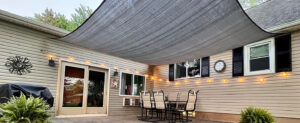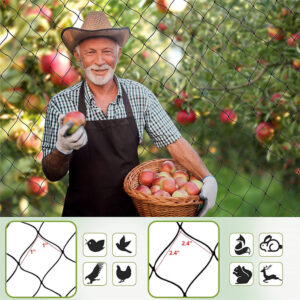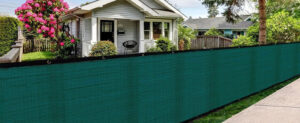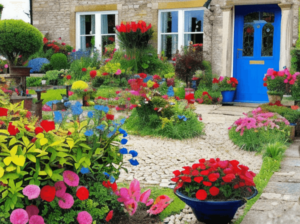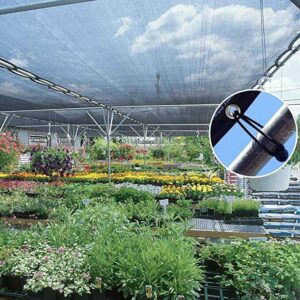Contact Us: [email protected] WhatsApp: +86-1365-3417-367
Introduction
Welcome to your comprehensive guide on solar shades for patios, an essential component for enhancing your outdoor living space. In this guide, we’ll dive deep into everything you need to know about solar shades, from understanding their basic functionality to choosing the right type for your needs, installing them, and maintaining them for long-term use.
Solar shades are not just a stylish addition to your patio; they are a practical investment that can improve your outdoor experience by providing UV protection, reducing glare, and helping control the temperature. Moreover, they contribute to your home’s energy efficiency by minimizing heat gain during hot days, thereby reducing your cooling costs.
Whether you are looking to create a more comfortable environment for your family gatherings or seeking ways to enjoy your patio despite the intense summer sun, solar shades offer a perfect solution. This guide will provide you with detailed insights, practical tips, and actionable advice to help you make the best decision for your home.
Let’s start by understanding what solar shades are and why they could be the best choice for your patio.
Understanding Solar Shades for Patios
What Are Solar Shades?
Solar shades, commonly known as sun shades or screen shades, are designed to block out sunlight and reduce glare while maintaining an outside view. These shades are crafted from specially engineered fabrics that allow them to absorb and dissipate heat, providing a cooler environment on your patio. The materials used are usually a mesh-like fabric that offers different levels of openness. The openness factor of a solar shade determines how tight the weave is, which in turn affects how much light and heat are blocked.
Solar shades come in various types, including:
- Polyester or PVC-coated polyester: Durable and resistant to fading and moisture.
- Woven mesh fabrics: Provide better visibility and airflow.
- Solar screen materials: Specialized for high UV protection.
Why Use Solar Shades on Your Patio?
The use of solar shades extends beyond just aesthetics. Here are some compelling reasons to consider them for your outdoor spaces:
- UV Protection: Solar shades significantly reduce your exposure to harmful UV rays, protecting both your skin and your outdoor furniture from sun damage.
- Glare Reduction: By blocking direct sunlight, these shades help reduce eye strain and increase the usability of outdoor entertainment systems during bright days.
- Privacy: While still allowing you to see outside, these shades obscure the view into your patio from the outside, offering a comfortable level of privacy.
- Energy Efficiency: Solar shades can help decrease the demand on your air conditioning by keeping your patio and adjacent indoor areas cooler, which can lead to lower energy bills.
Benefits Table
| Benefit | Description |
|---|---|
| UV Protection | Blocks up to 99% of harmful UV rays. |
| Glare Reduction | Reduces sunlight glare, making outdoor spaces more usable. |
| Privacy | Provides privacy while still allowing visibility from the inside. |
| Energy Efficiency | Helps reduce indoor temperatures and cooling costs. |
Incorporating solar shades into your patio design not only enhances comfort but also extends the life of your space by protecting surfaces from prolonged sun exposure.
Choosing the Right Solar Shades for Your Patio
Selecting the perfect solar shades involves more than just picking a color or style; it requires careful consideration of several factors to ensure you get the most out of your investment. Here’s how you can choose solar shades that are both functional and aesthetic.
Factors to Consider When Selecting Solar Shades
- Size and Coverage: Measure the area of your patio accurately to ensure the shades cover the desired space completely. It’s important to consider both width and length, as proper coverage can significantly impact the effectiveness of the shades in providing shade and reducing heat.
- Material and Durability: Choose materials that are suited to withstand the weather conditions in your area. If you live in a region with high humidity or frequent rain, look for waterproof or mold-resistant fabrics.
- Style and Aesthetics: Solar shades are available in a variety of colors and patterns. Select a style that complements your home’s exterior and interior design. Consider how the color will affect the visibility and the amount of light filtered through the shades.
Popular Types of Solar Shades
Solar shades are available in several types, each offering distinct advantages. Understanding these can help you make an informed decision:
- Roller Solar Shades: These are simple, elegant, and easy to operate. They roll up and down and can be motorized for added convenience.
- Retractable Solar Shades: Ideal for those who want flexibility, these shades can be retracted when not needed, providing an unobstructed view of the outdoors.
- Exterior Solar Shades: Mounted outside the windows or patio, these are extremely effective in blocking heat before it reaches the glass of your windows.
Comparison Table of Solar Shade Types
| Type of Shade | Benefits | Best for |
|---|---|---|
| Roller Solar Shades | Easy to use, minimalistic design | Those who prefer a sleek, modern look |
| Retractable Solar Shades | Flexible, can be hidden when not in use | Patios used for both sunbathing and shaded relaxation |
| Exterior Solar Shades | Blocks heat effectively, reduces AC costs | Areas with intense sunlight and heat exposure |
Aesthetic Integration
When integrating solar shades into your patio design, it’s essential to consider how they will blend with your existing decor. Here are a few tips:
- Coordinate Colors: Choose shades that match or complement your outdoor furniture and fixtures.
- Harmonize with Architecture: Pick a style that aligns with the architectural details of your home to create a cohesive look.
By keeping these considerations in mind, you can select solar shades that not only perform well but also enhance the overall beauty and functionality of your patio.
Installation and Maintenance of Solar Shades
Proper installation and regular maintenance are key to ensuring that your solar shades continue to function effectively and look great over time. Here’s a guide to help you install and maintain your solar shades efficiently.
DIY Installation of Solar Shades
Installing solar shades can be a rewarding DIY project that saves money and allows for customized setup. Follow these steps for a successful installation:
- Measure Precisely: Before purchasing your shades, measure the width and height of the area where the shades will be installed. Consider any obstructions like door handles or light fixtures.
- Choose the Mounting Type: Decide whether to mount the shades inside the frame for a clean look or outside the frame to maximize coverage.
- Gather Tools and Materials: You’ll need a drill, screws, a level, and possibly anchors depending on your wall material.
- Install Mounting Brackets: Use the level to ensure your brackets are aligned straight across. Mark the screw holes with a pencil, then drill and secure the brackets.
- Hang the Shades: Clip the solar shades into the brackets according to the manufacturer’s instructions. Test the mechanism to ensure they roll up and down smoothly.
Professional Installation Services
If DIY is not your style, professional installation can be a convenient and reliable option. Professionals can handle complex installations and ensure that your shades are perfectly aligned and securely mounted. When choosing a professional service:
- Check Reviews: Look for companies with positive reviews and good customer service.
- Ask for References: A reputable installer should provide references or photos of previous installations.
- Ensure Warranty: Professional installation often comes with a warranty for both the product and labor.
Maintaining Your Solar Shades
Regular maintenance extends the life of your solar shades and keeps them looking as good as new. Here are some maintenance tips:
- Cleaning: Dust the shades regularly with a soft brush or vacuum with a brush attachment. For deeper cleans, lightly sponge with a mild detergent solution and let air dry.
- Check Mechanisms: Periodically check the rolling mechanism and lubricate if necessary to ensure smooth operation.
- Inspect for Damage: Look for tears or fraying and repair them early to prevent further damage.
Maintenance Checklist
| Task | Frequency | Notes |
|---|---|---|
| Dusting | Weekly | Use a soft brush or vacuum |
| Deep Cleaning | Bi-annually | Use mild detergent, avoid harsh chemicals. |
| Mechanism Lubrication | Annually | Use silicone-based lubricants. |
| Damage Inspection | Bi-annually | Repair minor damages promptly. |
By following these installation and maintenance guidelines, you can ensure that your solar shades will provide optimal performance and durability.
Enhancing Your Patio Experience with Solar Shades
Solar shades are not only practical for controlling sunlight and heat but also versatile enough to enhance the overall aesthetics and functionality of your patio. Here’s how you can maximize the benefits of your solar shades and create a more enjoyable outdoor living space.
Additional Features of Solar Shades
- Motorized Solar Shades: For ultimate convenience, consider motorized shades, which can be operated with the push of a button. This feature is particularly useful for large patios or for individuals with mobility issues.
- Accessories and Add-ons: Enhance your solar shades with accessories such as wind sensors that automatically retract the shades in strong winds, or integrate remote controls for easier operation.
Combining Solar Shades with Other Patio Enhancements
To truly transform your patio into a serene and stylish retreat, combine your solar shades with other elements. Here are some suggestions:
- Patio Furniture: Select furniture that complements the color and style of your solar shades. Opt for comfortable seating that invites relaxation and social interaction.
- Lighting: Incorporate outdoor lighting that enhances the ambiance in the evening. String lights or solar LED lights can add a warm glow and make the patio welcoming at night.
- Outdoor Plants: Introduce greenery to your patio with potted plants or hanging baskets. Plants not only beautify the space but also improve air quality and provide natural shade.
Creating a Cohesive Outdoor Living Area
To achieve a cohesive look:
- Theme Consistency: Stick to a consistent theme or color scheme throughout your patio, from solar shades to cushions on your furniture.
- Functional Layout: Arrange your space to cater to its primary use, whether it’s dining, lounging, or entertaining. Ensure there’s enough room to move around comfortably.
By integrating these enhancements with solar shades, you can create an outdoor space that is not only functional but also a delightful extension of your home.
Conclusion
Solar shades for patios are more than just an accessory; they are a smart investment into the comfort, functionality, and aesthetic of your outdoor living space. By choosing the right shades, ensuring proper installation, and combining them with other enhancements, you can create an inviting patio that can be enjoyed in any weather condition.
With the detailed information, practical tips, and real-life case studies provided in this guide, you are well-equipped to make informed decisions about incorporating solar shades into your patio. Whether you aim to reduce energy costs, increase privacy, or simply extend your living space outdoors, solar shades offer a versatile solution that meets a wide range of needs.
Ready to transform your patio? Explore our full range of solar shades today and find the perfect match for your home!
Frequently Asked Questions (FAQs)
Let’s address some common questions about solar shades:
A: The openness factor of solar shades refers to the tightness of the weave and determines how much light and UV rays the shades let through. A higher openness factor (around 10%) offers more visibility but less UV protection, while a lower openness factor (around 3%) provides more privacy and UV blocking. Consider your primary needs: do you want to maximize the view or prioritize sun protection and privacy?
A: Solar shades can significantly impact a home’s energy efficiency by blocking solar heat gain, which reduces the need for air conditioning during hot months. By lowering indoor temperatures naturally, solar shades help decrease energy consumption and can lead to lower utility bills. The effectiveness can vary based on the color and material of the shade, with lighter colors reflecting more light and darker colors absorbing it.
A: Yes, solar shades can be equipped with motorization features that allow for automatic raising and lowering based on timers or environmental sensors like sunlight or wind. The benefits of automation include enhanced convenience, improved energy efficiency (by adjusting shades for optimal sunlight blocking throughout the day), and increased longevity of the shades by minimizing manual handling.
A: To ensure the longevity of solar shades, perform regular maintenance such as dusting every few weeks to prevent debris build-up. Inspect the shades and hardware annually for any signs of wear or damage, such as fraying or malfunctioning mechanisms. If your shades are exposed to a lot of environmental stressors, such as salt air or heavy pollution, more frequent cleaning may be necessary to prevent material degradation.
A: Recent innovations in solar shade materials include the use of nanotechnology and specialized coatings that enhance UV protection and dirt resistance. Some fabrics are now infused with antimicrobial properties to resist mold and mildew, which is particularly beneficial in humid climates. Additionally, there are eco-friendly materials made from sustainable sources that maintain durability and functionality without compromising environmental values.

